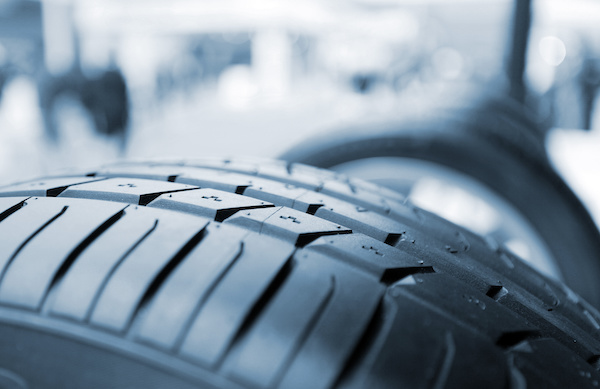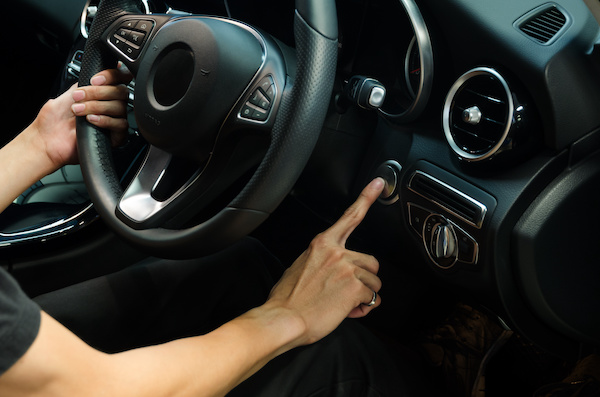Posted on 10/31/2022

When you drive with a quality set of tires, you'll find it much simpler and smoother to control your vehicle. Unfortunately, as tires age, they can begin to present hazards to your vehicle, including reduced performance, increasingly difficult steering, and even the risk of tire blowouts. If you notice that your tire has a bulge, it's important to address the issue as soon as possible by replacing the tire. Tire bulges indicate that the interior of your tire has lost its structural integrity and failed, and as a result, it can blow out and cause you to lose control of your vehicle. What Is The Cause Of Tire Bulges? Several issues can result in a tire bulge, including damage from road hazards and improper tire maintenance. Some of the most common reasons a tire bulge forms include the following: Your tire was overinflated or underinflated. If the tire isn't properly inflated, it won't be able to provide your vehicle with the proper level of support. You should c ... read more
Posted on 9/29/2022
.jpeg)
Your car requires several different fluids to ensure it is lubricated, powered and functioning. This means that occasionally, you might notice a leak. When this happens, it is important to observe its color and characteristics. For instance, • Engine oil is Light brown or dark • Brake fluid is usually Transparent to dark and sticky • Transmission fluid is Reddish and light or viscous and brown • Coolant fluid can be Icky, yellow, greenish, or pinkish • Power steering fluid will be reddish or light brown • Clear and thin water can be from several parts of the car How to tell if your vehicle is really leaking If you suspect that your car is leaking, there are ways to confirm this and evaluate the situation. Caution Light on the Dashboard There are several dashboard lights in newer vehicles. These are intended to notify you of a variety of potential engine problems. A number of factors, including the fluid making the transmission heat up more than u ... read more
Posted on 8/30/2022

Every motorist dreads the moment they try to start their vehicle and hear either nothing or the sound of the starter motor turning over without the engine catching. Delayed starting, or failure to start, is often down to a fault in either the battery or the alternator. Here we cover what the battery and the alternator do, as well as signs that your engine problems could be down to one or the other. The Function of the Battery and the Alternator Simply put, the battery provides the electrical charge needed to instigate the ignition process, as well as power the vehicle's electrical systems when the engine is switched off. In contrast, the alternator converts mechanical energy into the electrical energy that's stored in the battery. It also generates the power that's needed to keep the vehicle's electrical systems running when you're on the move or the engine is idling. Both are essential to ensure your vehicle starts and runs smoothly. Signs That you Have a Fault ... read more
Posted on 7/27/2022

There is hardly a nicer feeling than turning on your car's air conditioning to its coldest setting on a sweltering day. But if there's a foul scent blowing, that cool breeze can swiftly turn from being delightful to revolting! But is it just you, or is your car having some significant issues? Find out what kinds of scents can enter your car's air conditioning system and what they might indicate about your car. Reasons For Foul Scents If you can smell mildew developing in the system, it will smell musty or moldy (like filthy socks). This is actually a very typical issue with automobiles, and the main reason why it occurs is because your air conditioning system is running on recirculation only, and the fan isn't blowing for a minute or two after the air conditioning and engine have been turned off. Mildew can grow in many parts of your car's air conditioning system, but you'll discover that the evaporator core and the condenser are its favorite spots. These enc ... read more
Posted on 6/28/2022
.jpeg)
Warning lights alert you to potential problems with your vehicle. They come in many shapes and sizes. Here's what they look like, what they mean, and what to do. #1. Check Engine Light What Does It Look Like? The check engine light is a small, round yellow or orange light that flashes on your dashboard when there's something wrong with your car. What Does It Mean? If the check engine light comes on, you should visit a mechanic as soon as possible. There could be a problem with your emission system that could cause problems. What To Do? Pull over immediately and turn off the ignition until everything has cooled down. Then call a mechanic and make an appointment ASAP. #2. ABS Warning What Does It Look Like? This is a yellow light with a red ring around it. It is either on or flashing. What Does It Mean? There is fault detection with the anti-lock brake system (ABS). What To Do? Check for fault codes by pressing the 'Check Engine' or 'Malfunction Indicato ... read more